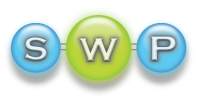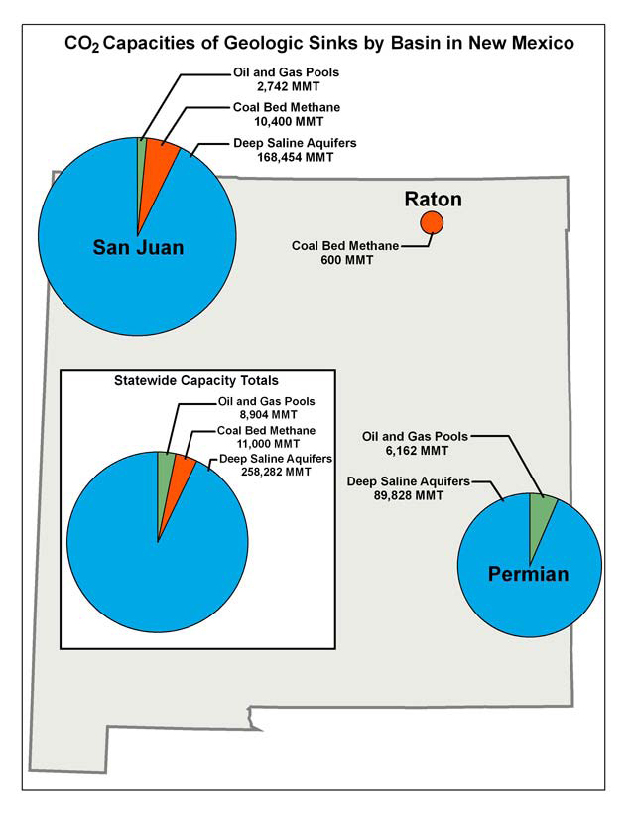Phase I Executive Summary
The Southwest Regional Partnership on Carbon Sequestration (SWP) region includes Arizona, Colorado, New Mexico, Oklahoma, Utah, and contiguous areas from three adjacent states, including western Texas, southern Wyoming, and western Kansas. This region is a net exporter of electricity, coal, oil and gas, and has some of the largest growth rates in the nation.
The Partnership characterized the region’s geologic and terrestrial sequestration attributes and options, including ranges of storage capacities of each option. The Partnership also evaluated and summarized CO2 sources in the region, and associated separation and capture technologies employed in the region. Measurement, mitigation and verification (MMV) options were evaluated, and a suite of most appropriate MMV options for Phase II validation testing was assembled. Outreach and education of the public was initiated, using a range of communication approaches, including websites, townhall meetings and conferences. The resulting data from all SWP analyses were compiled and published in comprehensive databases, with public online access; these data were also propagated to NATCARB.
The southwest region possesses an extensive CO2 pipeline network that transports over 30 Mt of naturally-sourced CO2 per year from the central Rockies to the Permian basin for EOR operations. In the Partnership’s Phase I project, we concluded that the most convenient and practical opportunities for sequestration would be to supplant the natural CO2 in these pipelines with power-plant-sourced CO2. We maintain this idea and suggest that “first options” for the nation may lie along existing pipelines. Furthermore, the SWP’s Phase I ranking of sequestration opportunities considered proximity to sources and/or pipeline infrastructure in addition to economic, safety, risk mitigation potential, and other factors. The result of the Phase I ranking process produced plans for a technology validation program that includes four geologic pilot tests located among Utah, New Mexico, and Texas, in addition to a region-wide terrestrial analysis and a local-scale terrestrial pilot test. The Phase I project recommended geologic sequestration test sites to inject a minimum of ~75,000 tons/year CO2, with a minimum injection duration of one year. Such pilots represent medium-scale validation tests in sinks that may host capacity for possible larger scale sequestration operations in the future. These validation tests will also demonstrate a broad variety of carbon sink targets and multiple value-added benefits, including testing of deep saline sequestration, enhanced oil recovery and sequestration, enhanced coalbed methane production and a geologic sequestration test combined with a local terrestrial sequestration pilot. The local terrestrial pilot involves restoration of riparian lands for sequestration purposes, using desalinated waters produced from our scheduled enhanced coalbed methane / CO2 sequestration pilot project. The Partnership’s regional terrestrial sequestration pilot program will focus on improved terrestrial MMV methods and reporting approaches specific for the Southwest region. In sum, the SWP’s Phase I project produced a field validation testing program that will seek to maximize specific performance, economic, and environmental goals of the DOE Carbon Sequestration Roadmap. This validation-testing will demonstrate efficacy of sequestration technologies to reduce or offset greenhouse gas emissions in the region. Risk mitigation, optimization of MMV protocols, and effective outreach and communication are additional critical goals of these field validation tests.
The SWP comprises a diverse group of expert organizations specializing in carbon sequestration science and engineering, as well as economics, public policy and outreach. These partner organizations are drawn from: 1) industry, 2) State governmental agencies and universities, 3) U.S. Federal government entities, and 4) other specialized partners, including the Western Governors Association. The Southwest Partnership continues a close alliance with the other Regional Partnerships, and the Western Governors’ Association has facilitated communication and collaboration. For Phase II, the Southwest Partnership is collaborating with Big Sky Partnership and WESTCARB on two different pilot tests in the region.
This report outlines the general results of the Phase 1 SWP program, which focused on characterization of the region and its sequestration options. Also included is a series of appendices, which are intended as stand-alone documents; these appendices include descriptions of the general regulatory frameworks in the Southwest region (by state), a summary of carbon sources in the region, a summary of the SWP risk factors assessment, a summary of monitoring technologies and gaps in coverage, a summary of activities conducted by the Western Governors Association on behalf of the SWP, and the action plans for the SWP Phase 2 sequestration validation program.
Download the Final Report(PDF, 19 MB)


